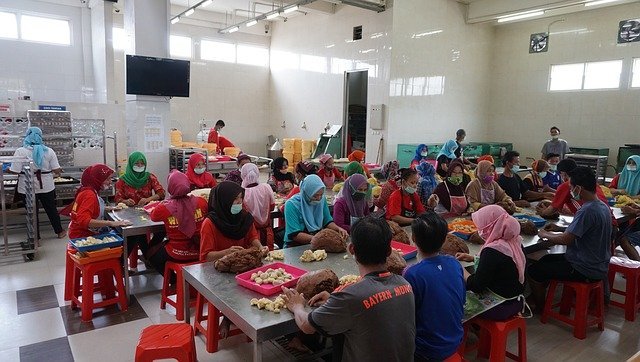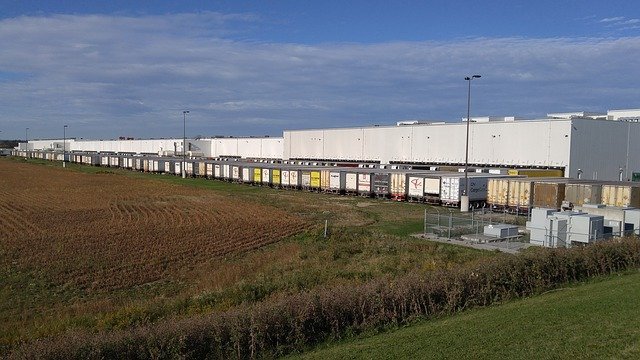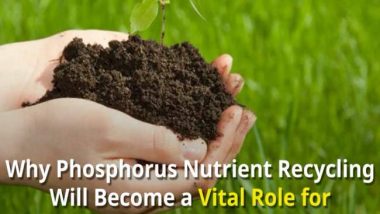Anaerobic digestion of biomass can be of real benefit to many companies that prepare food products of all types, but these companies often don't appreciate the biomass asset that lurks unseen in the high organic content of their food processing waste.
“Food processing companies large kitchen etc., may be missing out on the value of their waste food and other high calorie wastes!
In fact, until recently, almost none of the companies that could benefit from anaerobic digestion of their waste biomass had optimised for the emerging opportunity to save money and, in many cases, earn money from organic-waste-fed energy production.
Most food companies are not only unaware that they can profit from the anaerobic digestion of their biomass (biowaste), but they also incur significant costs in disposing of it.
These businesses may be charged for waste treatment and disposal using the Mogden formula, which determines costs based on the volume and strength of their wastewater.
Like other industrial companies that discharge waste treatment and disposal into the sewerage network, they should carefully consider whether to invest in an anaerobic digestion (biogas) plant that generates energy.

Anaerobic digestion technology has improved so much in the last 10 years that all food companies with sewer discharges should re-assess whether they should continue to use their existing waste treatment and disposal treatment processes. It may not be their most cost-effective way to treat and dispose of their organic waste (biomass).
The choice of waste disposal methods for any business is usually a matter that is seldom reviewed in any depth within organisations. This omission may continue for decades.
Decisions made many years ago based on the lowest cost in the first instance are held onto and frequently not analysed afresh when advances in technologies for waste management and disposal have moved on.
If companies look in-depth at their waste products in liquid and solid forms, look at biomass biowastes separately from other wastes, and managers make themselves more familiar with the data on the nature of their wastes (including waste treatment and disposal), several options for optimising processes to make the most of potentially valuable waste streams can often emerge.
Waste separation, water reuse, and anaerobic digestion to produce power are at the forefront of the available money-saving and environmentally sustainable techniques, which, in many businesses, may not have been considered in an integrated manner for many years.
Another factor worth reviewing is that in the past, many companies had an inbuilt culture that led them to carry out their waste treatment in-house. Nowadays, management is much more willing to recognise that much senior management time can sometimes be saved, to great advantage, by not undertaking peripheral activities like waste treatment in-house.
Why are you treating biowaste in-house? It may be more cost effective to sell it for energy extraction.
Instead, it may be better to develop close partnerships with other businesses that have the know-how to do things better. Also, economies of scale for regional waste disposal specialists may reduce costs through outsourcing waste treatment.
Decisions must also be made about whether waste treatment and disposal treatment processes should be run in-house or outsourced to a competent contractor.
Tip 1. Ensure any review starts with core decisions at the production process level
Blue-sky thinking is needed. If from the start, cost savings are the only driver for a company seeking to address cost issues in its waste treatment and disposal operations, many opportunities to improve company sustainability can be missed.
Unfortunately, the initial driver for a review of waste treatment practices within a business is usually the realisation that impending production changes are about to trigger higher discharge costs.
However, with many new waste treatment techniques available, a decision, for example, to invest in a waste treatment and disposal plant may be made in the belief that simply investing in an upgraded version of an existing plant technology will be a straightforward and easy-to-justify capital cost investment. But, it may not be the optimum solution.
Since we wrote this article, a number of recycling companies have started to depackage food industry waste.
Those companies are now offering competitive rates for the food waste that they collect, separate, sort, and depackage before selling to biogas companies.
Since energy costs rose much higher in 2022, biogas companies have been able to pay for the pulp.
Such narrowly based decisions to do business as usual and adopt piecemeal changes to how a business manages waste can be regrettable. Simply building a water treatment facility or, for example, a composting plant, to avoid waste treatment and disposal charges in the future, can be a major opportunity lost.
Successful waste treatment and disposal, while also achieving sustained cost reductions, involve analysing real data about a plant's waste creation and water use from start to finish. The much-neglected aim of waste minimisation should become a company mantra and an essential component of any solution. But, not to forget the “anaerobic digestion of biomass” option either.
Tip 2. Collect real plant data and collate it in intelligible formats
Ensuring that the decision-makers have the facts at hand before investigating waste treatment and disposal is such an obvious requirement. But, remarkably, many management firms balk at spending money on the necessary sensors and weighing technology needed to gather this information.
 Many organisations assume that recording waste produced and discharged month by month is sufficient.
Many organisations assume that recording waste produced and discharged month by month is sufficient.
However, such a sparsity of data is rarely sufficient when making major decisions about process requirements. Instead, basic monitoring equipment investments which would provide data that will be needed to optimise the process design are rejected.
And yet, the process designer will not be able to guess these flows for all days of the week, seasonally, and at other times, which will be industry-specific. Guesswork will seldom provide the right outcome.
Management needs to accept the need for proper data collection. when running less than optimally designed treatment plants, investments in process flow data collection cannot be neglected without financial penalties later.
Only when management is familiar with the full picture is it possible to understand exactly what the materials balances are on any site. This often involves understanding multiple material flows, both how much water and other (solid) material is coming in and what volumes and weights are flowing out.
Also, for mixed flows, what are the water contents, and what drives water content?

At the same time, for more complex processes, decision-makers need to understand where there are intermediate flows between processes. And where unwanted organic flows can be directed to a facility to provide the anaerobic digestion of biomass.
Most important is to Identify what percentage of incoming water ends up as effluent, the amount of biomass in it, and what happens to it at every step of the manufacturing process.
Only when this is known is it possible to start altering longstanding practices. But the rewards from doing this can be high, especially if there is an opportunity for anaerobic digestion of biomass. They may enable the business to start making significant reductions in waste tonnages, and also water-use savings.
It is almost never that companies have adequate data. But without, for example, a hydraulic profile and an accurate waste flow diagram for the site broken down for the busiest days and quiet periods within the working day, there will be design problems. Without this minimum, there really is not sufficient information to explore the “what ifs”, and size the much-needed engineering solutions.
Once, a distinct pattern emerges through familiarity with the data, showing how and why biomass and water, become waste, the decision-makers can move on.
Tip 3. Seek out high waste-content streams
Only after a waste analysis has been completed and the interrelated flows are charted intelligibly does it become possible to focus on different process options. Some may be responsible for producing highly concentrated waste or re-engineered that way, to implement the anaerobic digestion of biomass.
Keeping concentrated waste streams segregated and uncontaminated by other wastes, can have remarkably positive impacts on total waste treatment and disposal demands. If so, it is often worth considering segregating out highly concentrated waste.
The reason for this is that this waste type can often have a monetary value elsewhere. One option is as feedstock for a biogas digester (anaerobic digestion) plant.
But if not, it can frequently prove cheaper to tanker concentrated waste off-site rather than treat it. It may even be possible to invoke the “circular economy” to find businesses that can use your waste as a raw material for their own business.
Also, some waste streams will generate their own revenue. Fat, oil, and grease, for example, can potentially be valuable as feedstock for a company producing bioethanol. It is true to say that one man's waste is another man's gold mine.
Tip 4. Optimisation of Return on Investment
Treating the minimised residual waste is not just to be thought of as an end-of-pipe cost. Instead, treating waste effectively can provide a valuable return on investment (ROI).
Anaerobic digestion, for example, can generate power for the plant. Some of these types of waste treatment and disposal schemes can be more than self-sufficient in energy, with the bonus that any excess can be entered into the grid network.
Similarly, water reuse can offer savings. There are capital incentives available in the UK and tax relief offered on an element of the capital invested if it can be shown to reuse 40% of waste. In the Middle East, many plants use waste treatment to produce water suitable for irrigation.
A balance sheet of the costs versus return on equipment or operations should also include the reduced cost of paying a water company to take the wastewater for treatment and disposal. If the anaerobic digestion of biomass is included, there will be new products such as the energy sold, which will contribute positively to the company's balance sheet.
Also, companies should not forget the added bonus of improved CSR (corporate social responsibility), shareholder value, and environmental credentials.
Tip 5. Look at other solutions including for example the anaerobic digestion of biomass
When evaluating the viability of an in-house waste treatment and disposal solution, it is worth considering whether outsourcing the operation of any necessary plant to a third party might be an option.
Sometimes a third party might even see it as being to their advantage to finance the operation.
Some waste treatment and disposal companies are willing to offer financing and operations packages. This can be in a form which entails food companies entering a ‘simple' service agreement, rather than having to make the capital outlay themselves on equipment and processes.
They may also have expertise which allows the food company to negotiate consent agreements, and ensure legal compliance etc.
Tip 6. Re-assess whether to keep resources in-house

As part of the assessment of what a solution will achieve in terms of reduced effluent and compliance, it is vital to look at the resources available within the business in terms of labour, knowledge, expertise etc.
If looking to invest in a certain effluent treatment solution, make sure that the key personnel are in place to run with its implementation, ongoing maintenance and optimisation over time. Also, company management needs to consider what competencies will be needed to operate the waste treatment and disposal plant now and/ or a facility for the anaerobic digestion of biomass.
Tip 7. Choose a contractor with a track record
Ultimately, when companies are ready to invest in waste treatment and disposal treatment which may include anaerobic digestion of biomass, it's critical that they work with an established contractor with a long track record of operating in the same marketplace.
The contractor needs to understand the varying needs of a soft drink plant, a dairy, or a brewery.
Suitable contractors will be able to provide case histories of reference plants in the relevant industry. Such contractors are best placed to consider all the options available and tailor the most effective solution for the particular application including, of course, anaerobic digestion of biomass.
There is no one-size-fits-all solution on offer when tackling waste such as wastewater. It's all about going back to basics first, having an intimate knowledge of what the waste profile is of the plant, and finally being courageous to change the way companies work.
For those prepared to put in the investment, work to collect the right data, and apply that to an in-depth understanding of their wastewater and biomass waste issues the benefits can be amazing.
If they then partner with an experienced contractor, to deliver the necessary infrastructure (such as a anaerobic digestion of biomass facility), there is a lot of opportunity out there.
[Article originally published 16 September 2017.]





I am just starting out on this. How do I find out the cost of paying a water company to take the wastewater for treatment and disposal? Awesome article. Keep writing!
By ‘heck, it’s all well and good banging on about bettering CSR, boosting shareholder value, and sprucing up environmental credentials, but let’s not kid ourselves – if it’s all just for show and there ain’t no real graft behind it, then we’re just polishing brass on the Titanic, ain’t we?